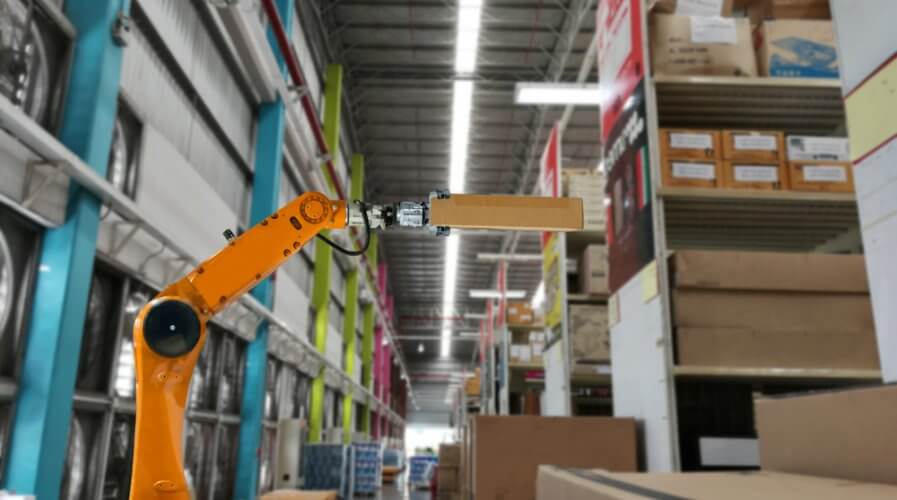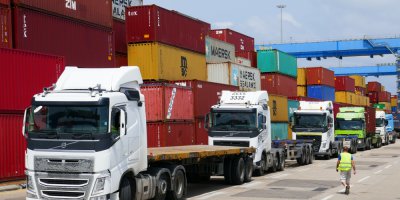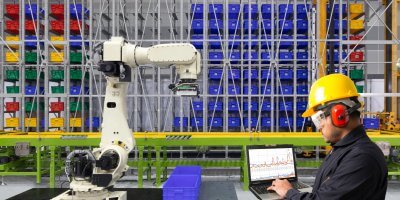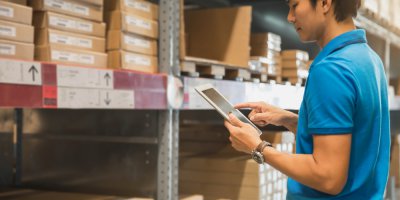
Robotics used to transport parcels around warehouses. Source: Shutterstock
Logistics companies go big on robotics says new report
LOGISTICS is a manpower-heavy industry where failures and inefficiencies are a direct result of human error. Robotics can change that, transforming the industry radically and significantly.
Technophile leaders in the industry are taking the lead, and the gains they’re seeing in a business acclimatized to wafer-thin margins, is motivating others to follow suit.
This is reflected in a recent report that reviewed the warehousing and logistics robots market and forecasted that revenues will reach US$30.8 billion by 2022.
Although the number isn’t too large in comparison to the spends on AI and IoT, it does translate to a CAGR of 38.79 percent in the five year period between 2018 and 2022.
The figures show significant opportunities for both established and emerging players.
At end of the projection, the Asia Pacific market is expected to outgrow other regions. China, Japan, South Korea, and India are predicted to be the largest source of demand for logistics robots.
The world had a sneak peek into how robotics can push the envelope for logistics during Alibaba’s 2018 annual Single’s Day sale which recorded US$30 billion in gross merchandise revenues.
Alibaba, in order to cope with the delivery needs of the event, opened doors to a state-of-the-art new warehouse that showcases the real power of robots.
A total of 700 robots manned the warehouse to fulfill orders from the sale. What at first glance looks like a radio-controlled car circuit is actually designated paths for robots to transport parcels.
The robots automatically pick up a parcel and deliver them to another part of the warehouse, where it gets picked up by a delivery firm. The process has brought significant time savings to logistics operations.
Alibaba-owned logistics firm Cainiao’s goal was to deliver to anyone in China within 24 hours and internationally in 72 hours.
Cainiao’s VP Ben Wang told CNBC that “automation is definitely the key to the future of logistics.”
The Chinese company is planning on automating more processes in its operations as it climbs the digital maturity curve.
Based on a recent DHL report, 69 percent of Asia Pacific companies surveyed cited e-commerce to hold a significant impact on their supply chain. Emerging technologies are truly shaping in what direction businesses grow and their profitability goals.
Alibaba is not the only one that’s introducing automation to warehouses to increase efficiency. Amazon uses logistics robots to transport parcels around its fulfillment centers too.
Amazon Robotics’ Chief Technologist Tye Brady said that the incorporation of robotics has not only been part of the digital transformation. It has also increased productivity for the overall supply chain.
“What used to take more than a day now takes less than an hour,” he told AFP. He added that robotics is able to fit about 40 percent more goods inside the same footprint.
According to Brady, the goal is to “extend people’s capabilities” so that humans staff can focus on problem-solving instead of repetitive tasks.
Robotics technology in the logistics industry is motivating investments with its increased productivity hours as well as healthy margins. The business outlook for robotics is positive with continuous breakthroughs on AI, machine learning, IoT, and more.
The rise of new technologies may raise fear in unemployment. However, if you take a step back, you’d see the steady progress it’s made for businesses across all industries.
It is no longer the hollow robot prototype imagery that comes into mind when robotics are mentioned. Robotics are full-fledged counterparts at work that comprise of a multi-billion dollar’s worth of experiences built into it.
READ MORE
- Strategies for Democratizing GenAI
- The criticality of endpoint management in cybersecurity and operations
- Ethical AI: The renewed importance of safeguarding data and customer privacy in Generative AI applications
- How Japan balances AI-driven opportunities with cybersecurity needs
- Deploying SASE: Benchmarking your approach






